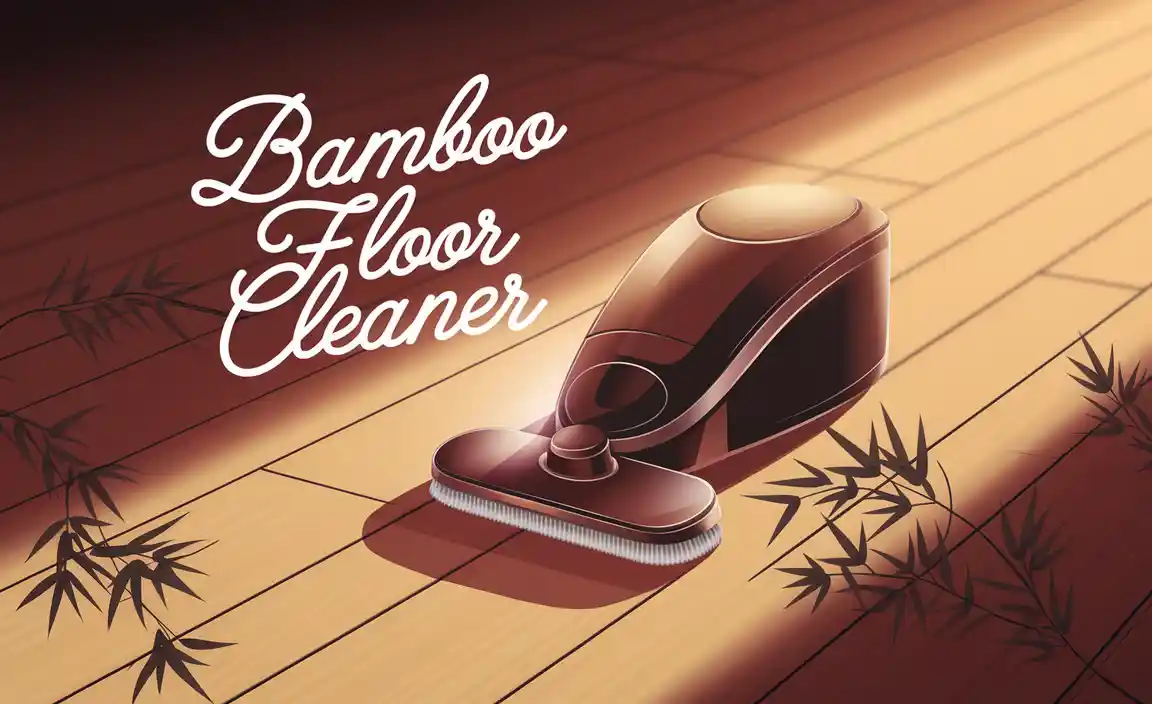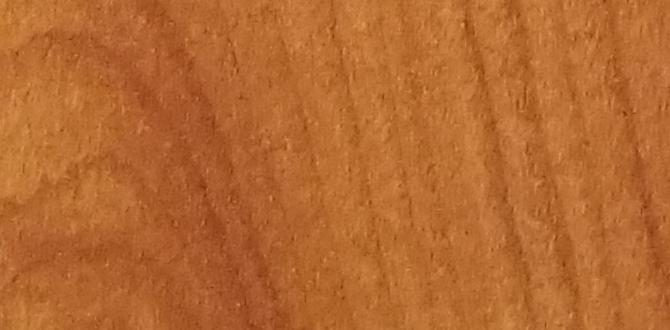Don’t let a worn driver blade stop your project! You can easily fix a worn driver blade on your nailer by understanding its function, identifying wear, and implementing a straightforward replacement process. This guide will walk you through it, getting your nailer back to shooting nails precisely and powerfully.
Hey everyone, Jack Shaffer here from Nailerguy! Ever brought out your trusty nailer, ready to tackle a project, only to find it’s not driving nails like it used to? Maybe the nails are proud, or they’re not sinking in deep enough. Often, the culprit is a worn driver blade. It’s a super common issue, especially if you use your nailer a lot. But don’t worry, it’s usually not a complicated fix. In this guide, I’ll show you exactly how to identify a worn driver blade and how to replace it yourself. We’ll get your nailer performing like new again, so you can get back to building with confidence. Stick around, and let’s dive in!
Table of Contents
What is a Driver Blade and Why Does It Wear Out?
Think of the driver blade as the heart of your nailer. This is the part that actually strikes the nail head and drives it into the wood. It’s a critically important component, responsible for delivering the force needed to complete each shot accurately.
The driver blade is typically made of hardened steel to withstand the repeated impacts. However, even the toughest materials can wear down over time. Every time your nailer fires, the driver blade slams against a nail head. This constant impact, along with friction from sliding against the nail and any dust or debris that might get into the mechanism, takes a toll. Over thousands of cycles, the tip can become dulled, nicked, or even slightly bent. This is the “wear” we’re talking about.
When the driver blade starts to wear out, its ability to accurately and forcefully strike the nail is compromised. This leads to the frustrating symptoms many of you experience, like nails not sinking properly or the nailer having a less consistent performance.
Signs Your Driver Blade is Worn
Spotting a worn driver blade before it causes a major issue is key. Fortunately, your nailer usually gives you some pretty clear signals. Paying attention to these signs can save you time and potential headaches down the road.
Here are the most common indicators that your driver blade might be past its prime:
- Inconsistent Nail Depth: This is probably the most common tell-tale sign. Some nails will sink perfectly, while others sit proud of the surface or don’t penetrate the wood at all. This inconsistency is a direct result of a compromised striking surface on the driver blade.
- Nails Bending or Deflecting: If you’re seeing a lot of bent nails, or nails that don’t go in straight, your driver blade might be damaged. A dull or chipped blade can’t guide the nail perfectly, leading to these issues.
- “Weak” Shots or Misfires: You might notice that your nailer just doesn’t sound or feel as powerful as it used to. Sometimes, a worn blade can cause internal friction or prevent a clean strike, leading to shots that lack force or even complete misfires where no nail is driven.
- Visible Damage to the Blade Tip: If you’re comfortable enough to visually inspect the blade (more on this later), look for any obvious nicks, chips, or a blunt, rounded tip. A healthy driver blade has a crisp, defined edge.
- Increased Jamming: While jamming can have many causes, a worn or damaged driver blade can sometimes contribute by not striking the nail head squarely, causing it to misalign and jam the mechanism.
Don’t ignore these symptoms! Addressing them early means a simpler fix and less frustration on your next workbench or construction site.
Tools and Materials You’ll Need
Before you start, gather everything you’ll need. Having all your supplies ready makes the process smooth and efficient. You want to be focused on the repair, not scrambling for a missing tool.
Here’s a checklist of what you’ll likely need to fix a worn driver blade:
- Replacement Driver Blade: This is the most crucial part. Make sure you get the correct driver blade for your specific nailer model. Check your nailer’s manual or the manufacturer’s website.
- Safety Glasses: Always protect your eyes, especially when working with tools and small metal parts.
- Gloves: Keep your hands clean and protected from any sharp edges.
- Screwdrivers: You’ll likely need a Phillips head or flathead screwdriver to disassemble parts of the nailer.
- Hex Keys/Allen Wrenches: Some nailers use hex bolts for disassembly.
- Pliers: Needle-nose pliers can be very handy for gripping small parts.
- Small Wrench or Socket Set: Depending on the nailer’s design, you might need these for certain fasteners.
- Nailer Manual: This is your best friend! It will have specific diagrams and instructions for your model.
- Compressed Air or Cleaning Rag: To clean out any debris during the process.
- Small Container or Tray: To keep track of removed screws and parts.
Referencing your specific nailer’s service manual is a must. Different brands and models have slightly different designs, and the manual will provide the most accurate guidance for disassembly and reassembly. You can often find these manuals online via a quick search for your nailer model and “manual” or “service manual.” For instance, many DeWalt nailer manuals are available on the official DeWalt support site.
Step-by-Step Guide to Replacing the Driver Blade
Alright, let’s get to it! Replacing a driver blade is usually a manageable DIY task. Just take your time, stay organized, and follow these steps. Remember, safety first!
Step 1: Disconnect Power and Discharge Air
This step is non-negotiable and critical for your safety. Never work on a powered tool. If you have an electric nailer, unplug it. If you have a pneumatic (air-powered) nailer, disconnect the air hose completely. Then, point the nailer away from yourself and others and pull the trigger a few times to release any residual air pressure. Double-check that there are no nails loaded in the magazine.
Step 2: Disassemble the Nailer Housing
This is where your nailer manual becomes invaluable. You’ll need to carefully remove the outer housing to access the driver blade mechanism. Look for screws on the body of the nailer. They might be hidden under plastic covers or grip areas.
- Keep track of all screws! Use your small tray or container to hold them. Note which screw came from where, as they can vary in size.
- Take pictures as you go. A quick photo before you remove a part can be a lifesaver when it’s time to reassemble.
- Gently maneuver the housing panels apart. Sometimes they just snap together, or you might need to carefully pry them open. Avoid forcing anything.
You’re typically aiming to expose the main cylinder where the driver blade assembly sits. This often involves removing the nose pieces and any protective covers around the firing mechanism.
Step 3: Locate and Remove the Driver Blade Assembly
Once the housing is off, you should be able to see the driver blade. It often slides up and down within a guide. There might be a retaining clip, screw, or a specific locking mechanism holding the driver blade assembly in place.
- Consult your manual to identify the retaining component specific to your model.
- Carefully remove any clips or fasteners. Small needle-nose pliers are often helpful here.
- Once the retainer is removed, the driver blade assembly should slide out. It might come out from the top or bottom. Be prepared for it to be a bit greasy from internal lubrication.
- If the driver blade itself is a separate piece from the driver rod assembly, you’ll need to figure out how it detaches. Some are press-fit, others use a small screw, and some are integrated.
Pay close attention to the orientation of the assembly as you remove it. This will be important for reassembly.
Step 4: Inspect the Old Driver Blade
With the assembly out, take a good, close look at the old driver blade. This is your chance to confirm it was indeed worn or damaged. You’ll likely see:
- Blunted Tip: The sharp, defined tip will be rounded or flattened.
- Nicks and Gouges: Small chips or cuts on the striking surface or edges are clear signs of wear and tear.
- Bending: In severe cases, the blade might be slightly warped.
A visual inspection like this helps you understand why your nailer wasn’t performing well and confirms you’re on the right track with the replacement.
Step 5: Install the New Driver Blade
Now for the fix! Take your new, sharp driver blade and install it into the assembly. Make sure it’s positioned exactly as the old one was.
- If the driver blade is a separate part, carefully fit it into its housing or onto the driver rod. Ensure any grooves or keyways align correctly.
- If it’s a press-fit, you might need to gently tap it into place with a rubber mallet or a block of wood to avoid damaging it.
- Re-secure any retaining clips, screws, or fasteners that hold the driver blade in place within its assembly.
- Make sure the new blade moves freely within its guide without binding.
This is where referring back to your pictures and manual is essential. Getting the new blade seated perfectly is key to proper nailer function.
Step 6: Reassemble the Nailer
This is essentially the reverse of disassembly. Carefully put all the parts back together in the correct order.
- Slide the driver blade assembly back into its cylinder. Ensure smooth movement.
- Re-attach any housings, nose pieces, and covers.
- Replace all screws, making sure to put the correct screw back in its original hole.
- Double-check that all connections are secure.
Don’t rush this step. A correctly reassembled tool is a safe and functional tool.
Step 7: Test the Nailer
Before you load it up with nails and get back to a big project, a quick test is wise. Connect the air supply (for pneumatic) or plug it in (for electric). Point the nailer in a safe direction at a scrap piece of wood. Fire a few shots.
- Listen to the sound. It should sound strong and consistent.
- Observe the nail depth. Nails should be driving in straight and to the desired depth.
- Check for any unusual noises or movements.
If everything sounds and feels right, congratulations! You’ve successfully fixed your worn driver blade.
Preventing Future Driver Blade Wear
Now that you know how to fix it, let’s talk about how to make your new driver blade last. A little preventative maintenance goes a long way in keeping your nailer in top shape and extending the life of its components.
Here are some tips to help prevent your driver blade from wearing out prematurely:
- Use the Right Nails: Always use the nails recommended for your specific nailer model. Using incorrect sizes or types can put undue stress on the driver blade. Refer to your nailer’s specifications for recommended nail dimensions and materials. The Fine Homebuilding website often has great resources on tool usage and maintenance.
- Keep it Clean: Dust, wood debris, and old lubricant can build up inside your nailer. This gunk acts like sandpaper, accelerating wear on all moving parts, including the driver blade. Periodically clean the internal mechanisms as per your manual’s instructions. Compressed air is your friend here.
- Regular Lubrication: Most pneumatic nailers require regular lubrication to ensure smooth operation. Follow the manufacturer’s recommendations for how often and what type of oil to use. Proper lubrication reduces friction, which directly reduces wear.
- Avoid Dry Firing: Firing the nailer without a nail in the magazine (dry firing) puts unnecessary impact stress on the driver blade and other internal components. Try to avoid this whenever possible.
- Proper Storage: Store your nailer in a clean, dry place, protected from dust and moisture. If it’s a pneumatic tool, ensure the air pressure is turned off and the hose is disconnected.
- Don’t Force It: If your nailer is having trouble driving a nail, don’t just keep hammering away. Investigate the cause. It could be a nail jam, an issue with the wood you’re working with, or in this case, a worn driver blade. Forcing it can cause damage.
Implementing these simple habits will help ensure your driver blade, and your entire nailer, serve you well for many projects to come.
Common Nailer Driver Blade Issues and Solutions
To give you a quick overview, here’s a handy table summarizing common problems you might encounter with a driver blade and their typical solutions.
| Issue | Possible Cause | Solution |
|---|---|---|
| Nails not sinking fully | Worn driver blade tip, bent driver blade, low air pressure | Replace driver blade, check air pressure and regulator settings, check for jams. |
| Nails bending or deflecting | Damaged/chipped driver blade, improper nail loading, worn driver guide | Replace driver blade, ensure nails are seated correctly, clean and inspect driver guide. |
| Nailer jams frequently | Worn driver blade (not striking squarely), debris in mechanism, worn driver guide seal | Replace driver blade, clean the tool thoroughly, inspect and replace worn seals. |
| Weak firing power | Worn driver blade (friction), air leaks, low air pressure | Replace driver blade, inspect for air leaks (use soap and water to find them), ensure proper air pressure. |
| Visible damage to driver blade | Normal wear and tear, impact from debris or foreign objects | Immediate replacement of the driver blade and assembly. |
FAQ About Fixing Worn Driver Blades
How much does it cost to replace a driver blade?
The cost can vary, but replacement driver blade kits typically range from $15 to $50. This is significantly cheaper than buying a new nailer, making it a very cost-effective repair. Prices depend on the nailer brand, model, and where you purchase the part.
Can I sharpen a worn driver blade?
While it might seem tempting, attempting to sharpen a driver blade is generally not recommended. Driver blades are hardened steel and precision-ground for their specific function. Sharpening can alter its temper, shape, and structural integrity, leading to poor performance or even catastrophic failure. It’s almost always better to replace it with a new, factory-spec part.
How often should I replace my driver blade?
There’s no set schedule, as it depends heavily on how much you use your nailer and the conditions it’s used in. For light DIY use, a driver blade might last for years. For heavy professional use, you might need to replace it annually or even more often. The best indicator is the performance of your nailer – replace it when you start experiencing the symptoms of wear.
<h3 id="what-is-



